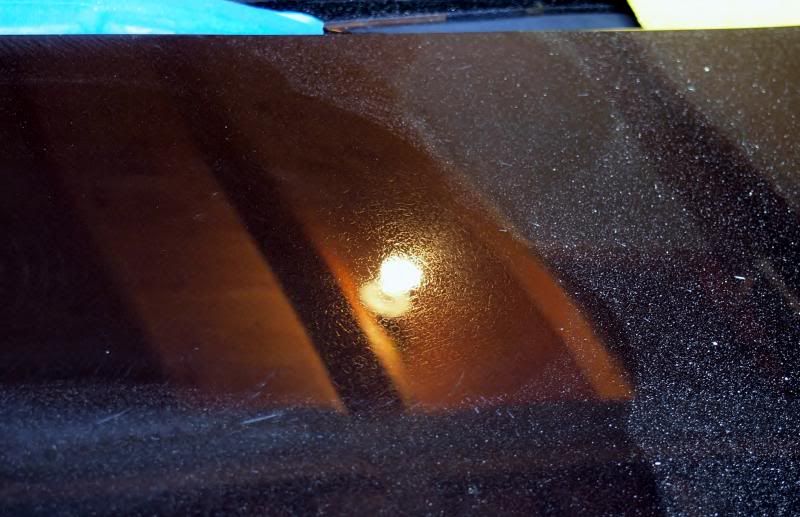Junebug
JAFO
OK, I detailed another 3/4 ton, 4 door, 4X4, truck -and black too, lets make it easy. It was a 06 Dodge with the Cummins, cool truck and very well taken care of inside. But, after the wash and clay, I was faced with about an acre of black paint with the waterspots from hell. I thought, hey, M101 with MF should do, I tried various combo's with M101-105-D300 and MF and orange foam. M101 with orange foam "worked" if you did at least 2 full steps, maybe 3. Hey, I'm not that young anymore and with temps in the 90's, I needed help. So, I brought out the 3D Eraser waterspot remover, I remember somebody saying it really worked. No kidding, oh heck yeah it did. I found that if you applied it thick, and worked it in with a MF towel for 2-3 minutes, then let it sit up while you unbent your old fingers and got some gatoraid, it worked great. I never let it dry on the paint, and I washed it off with soap and then rinsed, dried and what do you know, 1 step with M101 on orange and it was LSP ready! Dust? You bet, but, it wasn't slowing me down, I went over it with the Duragloss no rinse stuff and dried it, then hit it with a nice layer of BFWD, worked it in good with a LC red pad, the paint seemed to suck it up. Anyway, wipe off was easy and the customer said and I quote - this didn't look this good the day I bought it, and he gave me a nice tip!
So boys and girls, if you don't have 3D Eraser, I hope you NEVER have a job with waterspots. Me? I'm ordering more and asking Ben to make this in the quart size too.
One thing that keeps bothering me though (in my best Lt. Columbo) is - could Eraser be used with MF pads on a PC? As long as you kept the speed around 2-3? and kept the surface wet, why or why not?
So boys and girls, if you don't have 3D Eraser, I hope you NEVER have a job with waterspots. Me? I'm ordering more and asking Ben to make this in the quart size too.
One thing that keeps bothering me though (in my best Lt. Columbo) is - could Eraser be used with MF pads on a PC? As long as you kept the speed around 2-3? and kept the surface wet, why or why not?

